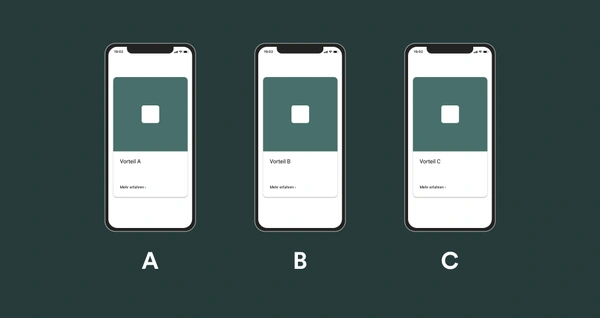Behavioral economics sheds light on psychological and economic aspects of human behavior and decision making. Quantitative behavioral economics experiments measure the effect of nudges (behavior-guiding measures) and help to optimize their impact. For this purpose, behavior and decision-making processes are analyzed quantitatively with respect to specific functions. Concepts of behavioral economics are skillfully combined with quantitative research approaches. The behavioral economic experiments provide statistically supported facts that significantly simplify decisions.

Whereas usability describes the characteristics of user interfaces and dialogs, behavioral economics measures support and guide user motivation and target behavior. The combination of both disciplines ensures an all-around positive user experience and satisfied users.

The approach to conducting these experiments is divided into the following steps:
Question formulation and hypotheses: First, researchers establish a clear objective and develop theories that could explain specific behaviors or decision-making processes.
Experimental design: Then, one designs a structured experiment, focusing on variables, conditions, and groups.
Data collection: Depending on the research question posed, researchers then collect data. This can take the form of online surveys, experimental laboratory studies, or field studies.
Data analysis: They then analyze the collected data to identify relationships, patterns, and statistical significance. This involves applying statistical tests and models to test hypotheses.
Features of quantitative behavioral economics experiments include:
Controlled conditions: Experiments in controlled conditions minimize confounding factors and thus yield precise results.
Manipulation of variables: By purposefully adjusting variables, researchers can accurately examine their influence on users' behavior and decision-making processes.
Objective data collection: By using quantitative measures and metrics, objective data is collected, making quantitative analysis possible in the first place.
The advantages and benefits of quantitative behavioral economics experiments are many:
Objective data: Objectively replicable data allow for sound and meaningful analysis.
Generalizability: Using larger samples and statistical analysis, research findings can be extended to broader populations.
Identification of behavioral patterns: These experiments allow experts to uncover specific decision-making processes and behavioral patterns.
Validation of hypotheses: The scientific basis of the experiments ensures that hypotheses are tested and validated according to accurate standards.
Kahneman, D., Tversky, A. (1979). Prospect Theory: An Analysis of Decision under Risk. Econometrica, 47(2), 263-291.
Thaler, R. H., Sunstein, C. R. (2008). Nudge: Improving Decisions About Health, Wealth, and Happiness. Penguin Books.